Key takeaways:
- Choosing the right self-publishing platform is crucial and requires careful consideration of features, user interface, and community support.
- Independent publishing empowers authors with creative freedom, higher revenue shares, and a sense of control over their work.
- Marketing and community engagement are vital for success; building an author brand and maintaining reader relationships can significantly impact visibility and loyalty.
- Patience and persistence are essential in the self-publishing journey, as well as recognizing the value of feedback from beta readers and peer support.

Understanding self-publishing platforms
Self-publishing platforms offer a gateway for authors to share their stories with the world. When I first explored these platforms, I felt a mixture of excitement and uncertainty. I wondered if I could truly take charge of my publishing journey and what that would look like.
One aspect I found fascinating was the sheer variety of platforms available, from popular ones like Amazon Kindle Direct Publishing to niche options tailored to specific genres. Each platform has its own set of tools, resources, and even community support. I remember spending hours comparing features and trying to decide which one would best fit my creative vision. It made me realize that choosing the right platform is essential; it can make or break an author’s success.
As I delved deeper, I discovered the importance of understanding the terms of service each platform offers. It was eye-opening to see how royalties, distribution, and copyright vary widely among them. Have you ever read a contract and felt completely lost? I certainly did! That experience taught me the importance of not just understanding the basics but also digging into the fine print that directly impacts my work and revenue.

Benefits of independent publishing
The beauty of independent publishing lies in its empowering nature. I still remember the moment I hit “publish” and saw my work available for readers around the globe. That was a thrilling realization—I felt like I was in control of my destiny, free from the constraints of traditional publishing. Isn’t it exciting to think that anyone can step into the role of an author and share their unique voice?
Another major benefit is retaining creative freedom. Unlike traditional routes, I was free to experiment with my cover designs, marketing strategies, and even the content itself. I recall grappling with whether to include a particular chapter that pushed conventional boundaries, and in the end, I opted to trust my instincts. It was liberating to know that I didn’t have to go through endless rounds of approvals or market testing. Creative decisions were truly mine to make. How refreshing is that?
Finally, independent publishing often offers higher revenue shares compared to traditional publishing models. I’ve experienced this firsthand. When I began to analyze the potential earnings from my work, I was pleasantly surprised to find that I could reinvest in my craft more quickly. It felt rewarding to see my efforts translate into tangible financial returns, which motivated me to aim even higher. Have you considered how much more control you could have over your earnings in the self-publishing world?
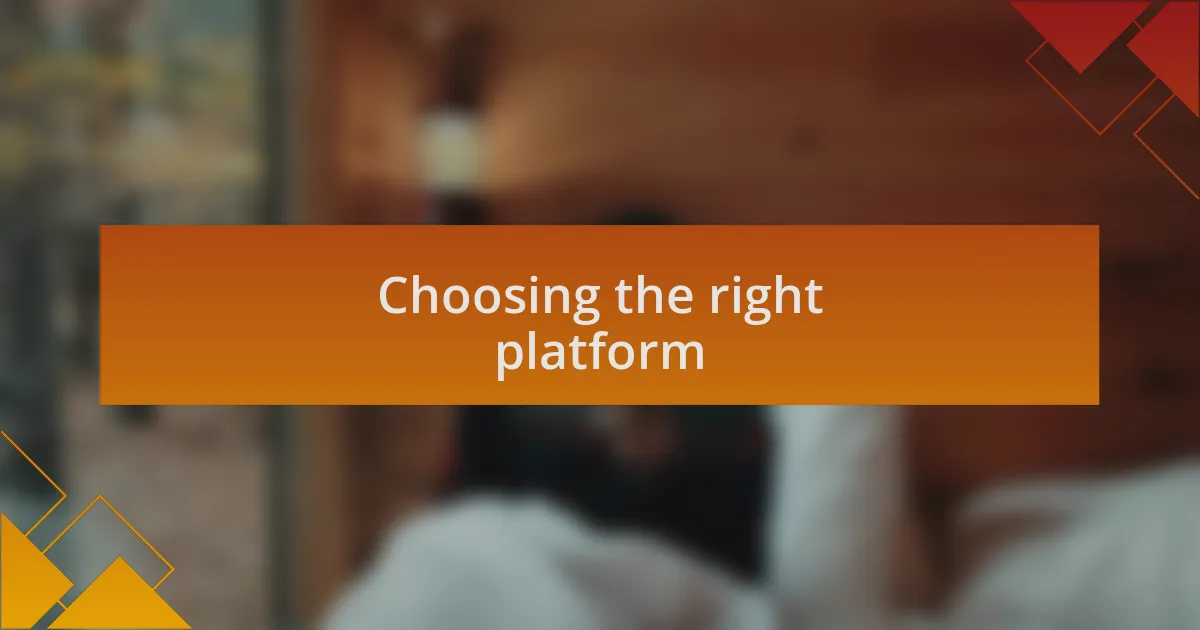
Choosing the right platform
When it came to choosing the right self-publishing platform, I found that the options can be overwhelming. Each platform has its own strengths, targeting different types of authors and genres. I remember spending hours comparing features, from distribution reach to royalty rates, just to find the one that felt right for me. Have you ever felt that mix of excitement and anxiety when weighing your options?
One thing I learned through my experience is to pay close attention to the user interface. An intuitive platform can make the publishing process smoother and more enjoyable. I once tried a platform that was so clunky that it made me second-guess my decisions. The frustration I felt was palpable, and it was a valuable reminder of how vital ease of use is in self-publishing.
Lastly, consider the community and support network surrounding the platform. When I opted for a platform with a robust author community, I felt more equipped to navigate challenges. The advice and encouragement I received made all the difference. Have you thought about how a sense of community could impact your publishing journey?
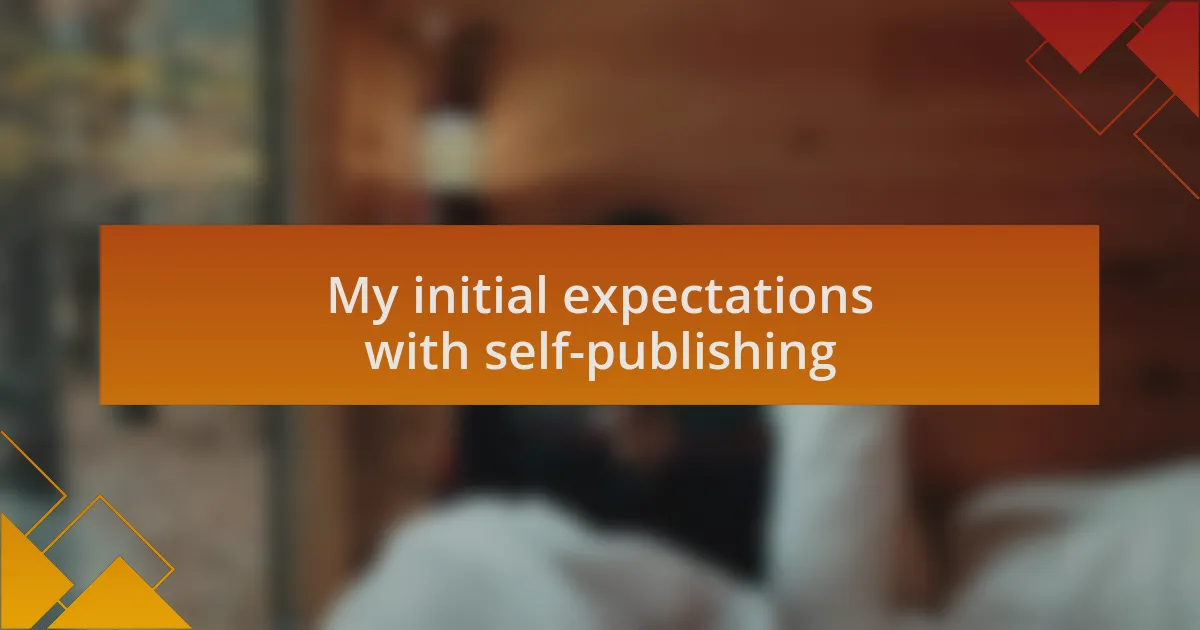
My initial expectations with self-publishing
When I first ventured into self-publishing, I expected it to be a straightforward process. I imagined that once I had finished writing, I would simply upload my manuscript and see it in print. But soon, I realized that there was much more involved, like marketing my book and engaging with readers. Have you ever thought everything would be easier than it turned out to be?
Initially, I believed that self-publishing would grant me complete control over my creative work. The idea of being my own boss was exhilarating. However, I quickly discovered that with that freedom comes the responsibility of learning things I hadn’t anticipated, like formatting and cover design. Did I ever think about how much I would have to learn on this journey? Not really!
I remember the moment I completed my first draft and got excited about publishing. I thought that my book would automatically find its audience, thinking readers would eagerly seek it out. That naivety was a wake-up call; it taught me the importance of persistent outreach and building relationships within the writing community. Have you ever underestimated the effort required in sharing your work? It’s a crucial step that can’t be overlooked.
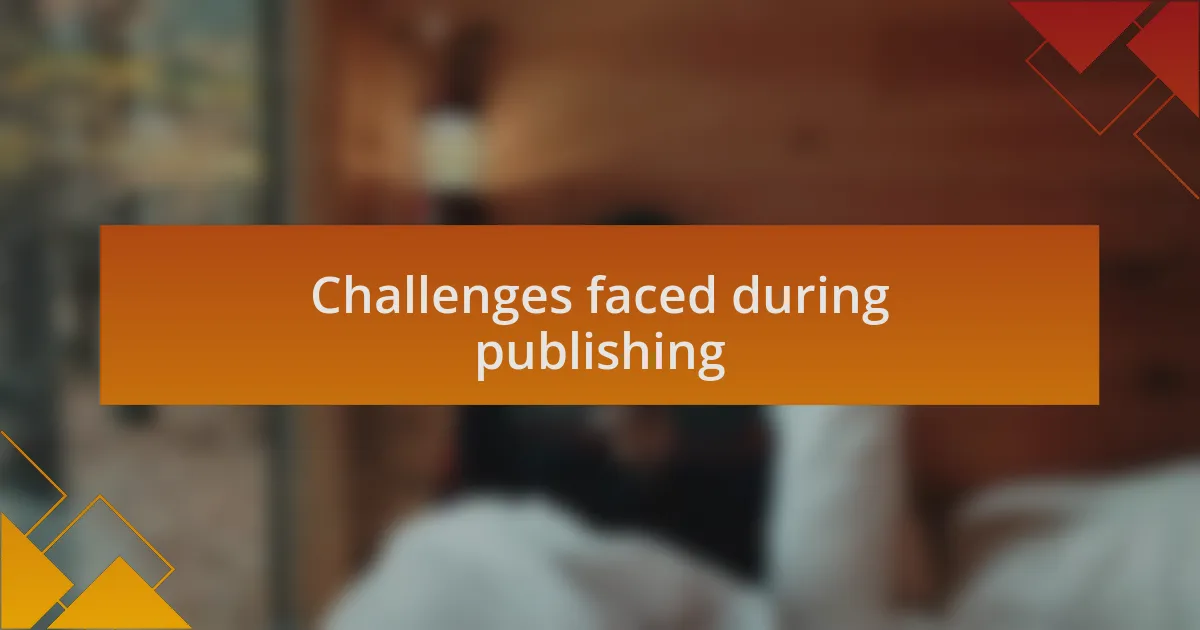
Challenges faced during publishing
Navigating the self-publishing landscape isn’t without its hurdles. There were instances when I found myself grappling with the intricacies of uploading my manuscript on various platforms. In one particular case, the file format I used wasn’t compatible, which led to frustration and a feeling of defeat. Isn’t it interesting how something so small can delay our dreams?
Another challenge I faced was mastering the marketing game. At first, I thought simply publishing my book would suffice, yet I quickly learned that reaching my audience required creativity and strategy. There were moments of doubt when I questioned whether my efforts would ever pay off. Have you ever poured your heart into something, only to wonder if anyone would notice?
As I dived deeper into the world of self-publishing, I realized the importance of building a network. I experienced a rollercoaster of emotions trying to connect with fellow authors and readers. The initial rejections from online communities stung more than I anticipated. But I asked myself: What if persistence pays off? In the end, those connections became invaluable, turning solitary moments into shared victories.
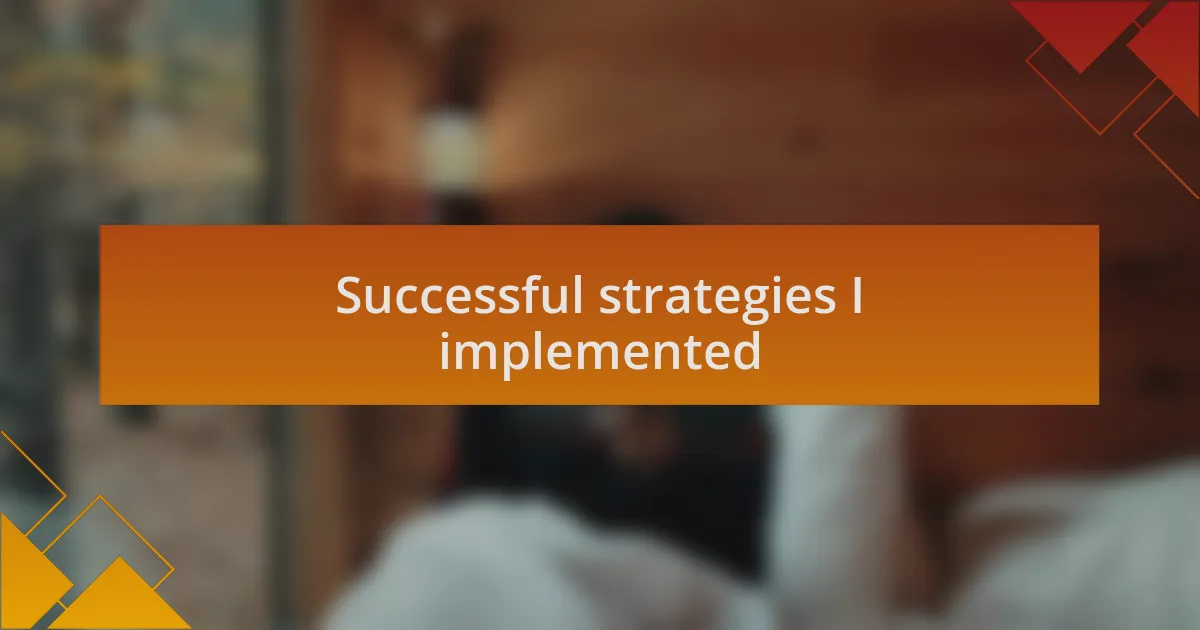
Successful strategies I implemented
One effective strategy I implemented was focusing on building an author brand early on. I realized that readers connect with more than just the book; they want to know the person behind it. By sharing snippets of my writing process and personal stories on social media, I was able to create a buzz that helped engage potential readers long before my book launch. Have you ever thought about how your journey can resonate with others?
Another pivotal move was leveraging beta readers before finalizing my manuscript. Inviting a select group to read my work allowed me to gain honest feedback that ultimately improved my book. I remember one beta reader who pointed out a character flaw I hadn’t even noticed. It’s these insights that make me think: how often do we overlook valuable perspectives that can elevate our work?
Lastly, I embraced the power of email marketing, which I initially underestimated. Building a mailing list and sending out newsletters helped me maintain a direct line to my audience. I recall the thrill of seeing those open rates increase, knowing that my words had found a home in my readers’ inboxes. Isn’t it incredible how a simple email can foster a lasting relationship?
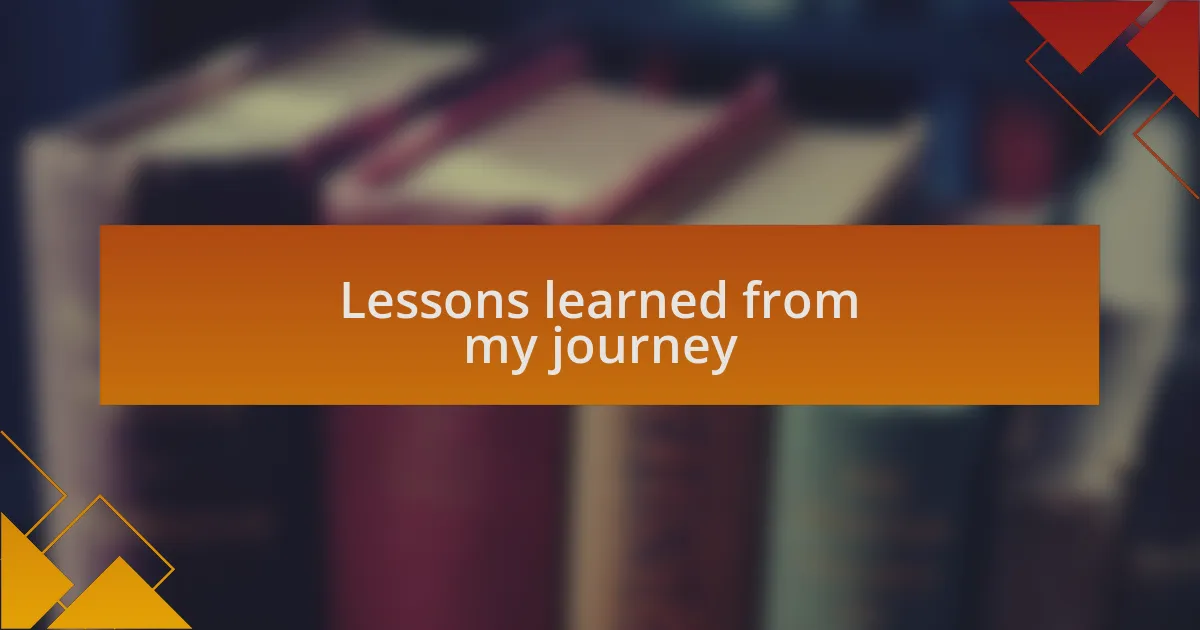
Lessons learned from my journey
Throughout my self-publishing journey, I’ve learned that patience is truly a virtue. I vividly remember the weeks spent anxiously waiting for feedback from my editor. The inevitable self-doubt crept in during that time. I came to realize that the process takes time, and rushing it can compromise quality. Isn’t it fascinating how patience can transform our work?
Another profound lesson was about the importance of community. Early on, I was hesitant to connect with other writers, thinking it would be overly competitive. But once I joined a local writing group, everything changed. Sharing experiences and challenges with fellow authors brought a sense of belonging I didn’t expect. This support network not only boosted my morale but inspired me to push through tough writing days. Have you ever considered how a community can amplify your creative process?
Lastly, I discovered that marketing isn’t just a one-time effort; it’s an ongoing relationship with readers. I remember feeling overwhelmed by the myriad of marketing tactics available. It took time to see the value in consistent engagement, like hosting Q&A sessions or interacting with readers on social media. These interactions have fostered a loyalty I hadn’t anticipated. What if cultivating relationships with readers became the cornerstone of your publishing journey?